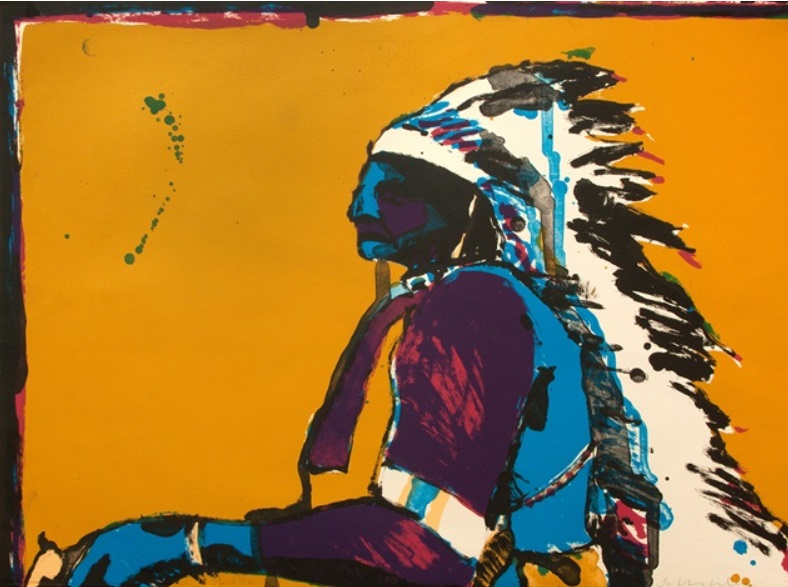Native American painter, sculptor, and printmaker Fritz Scholder was born on October 6, 1937, and passed away on February 10, 2005. In the 20th century, Scholder emerged as one of the most prominent and divisive figures in Native American painting. Scholder’s paintings often questioned typical Native American stereotypes while also delving into themes of identity, assimilation, and the complex relationship between Native Americans and the dominant Western society. He became highly well-known for his “Indian” series, which presented Native Americans in a way that was distinct from idealised and conventional depictions.
Vibrant colours, expressive brushwork, and a blend of abstract and figurative elements characterised Scholder’s style. His paintings often featured surreal and provocative imagery that made spectators reevaluate their assumptions about what it meant to be Native American. Scholder was not only a painter but also a printmaker and sculptor. He held several teaching positions at universities and art organisations over his career.
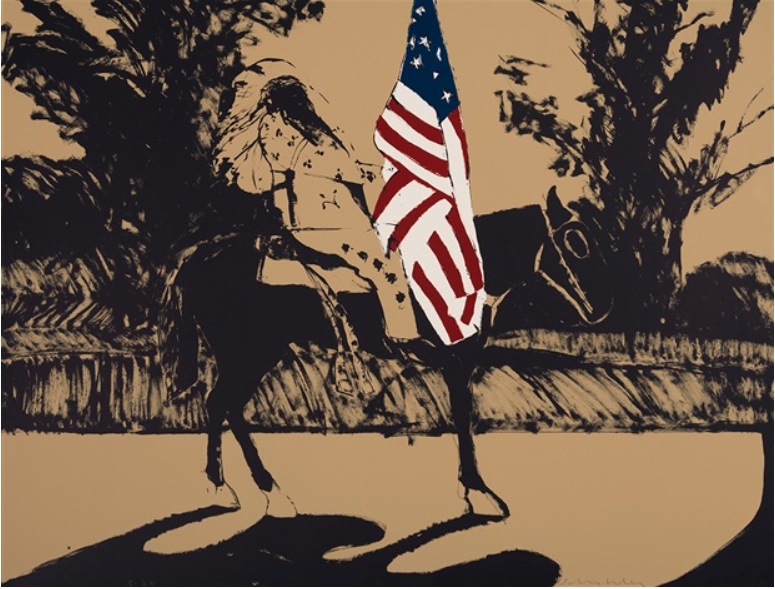
Native American art and the broader field of modern art have greatly benefited from Fritz Scholder’s influence. His work is still studied and shown, and he continues to impact discussions about the intersection of identity, culture, and the arts.
Significant works of Fritz Scholder
Throughout his career, Fritz Scholder explored many themes and techniques in his work. Part of Scholder’s “Indian” series, “Indian with Beer Can” (1969), is renowned for its forceful and provocative imagery. It tackles current topics and dispels myths about Native Americans.
Another noteworthy work from the “Indian” series is “Indian at a Bar” (1969), which shows a Native American person seated at a bar, further challenging conventional perceptions and presenting viewers with a contemporary and frequently unsettling reality. Scholder questions stereotypes about Native American dress in “Indian with No Clothes” (1967), which features a figure devoid of customary garb. His continuous investigation of identity and cultural representation is reflected in the work.
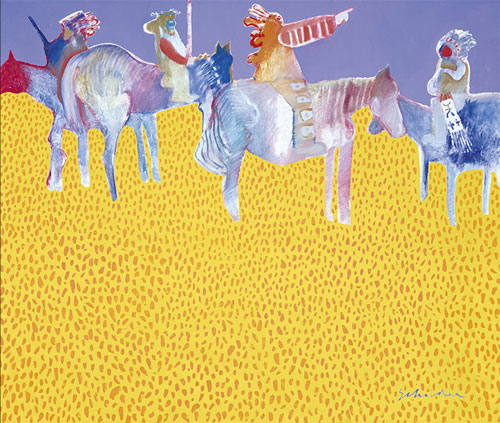
As part of the “Super Indian” series, Scholder emphasised features and used a bright, graphic approach in “Super Indian No. 2” (1969). The series explores pop art inspirations instead of sticking to the conventions of Native American portraiture. Scholder’s “Mystery Indian” series includes mysterious and surreal depictions of Native American beings in “Mystery Indian” (1971). The mystical and spiritual facets of Native American culture are examined in this series.
The 1970 song “We Are All Savages” represents Scholder’s involvement in social and political issues. The image forces the observer to face preconceived ideas about civilization and savagery. Leaving behind his earlier works with Native American themes, Scholder created a series of fantastical and surreal creatures in “Monsters” (1982). His ability to work with various subjects and his versatility as an artist are evident in “Monsters.” A striking message about the survival of Native American identity in the face of historical obstacles is made in the 1971 painting “The American Indian is Still Alive,” which depicts a figure with a haunting expression.
Fritz Scholder’s American Indian Series
In the context of Native American art and the larger contemporary art scene, Fritz Scholder’s “American Indian” series is essential. The series, which offered a critical and provocative viewpoint on indigenous identity, was developed in the late 1960s in response to existing misconceptions and romanticised portrayals of Native Americans.
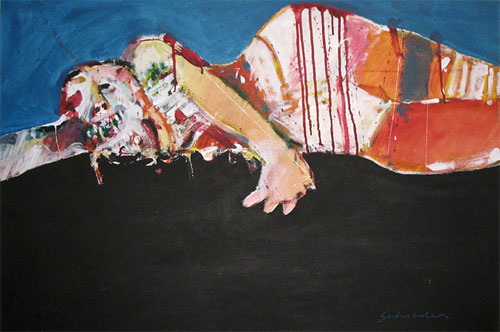
Scholder deliberately challenged cliched and stereotyped depictions of Native Americans in the “American Indian” series. He painted Native American topics in a more sophisticated and modern perspective, frequently emphasising the terrible reality faced by indigenous peoples, as opposed to idealised or romanticised portrayals.
The show was a potent critique of mainstream stereotypes and beliefs regarding Native Americans. Scholder challenged viewers to confront the preconceptions embedded in popular culture and to reevaluate their beliefs by showcasing images that deviated from the usual. Scholder investigated the problems of identity and assimilation that Native Americans experience in the contemporary world through his artwork. His paintings frequently highlighted the conflict between Western society’s influences and traditional indigenous culture, highlighting the difficulties in juggling these competing identities.
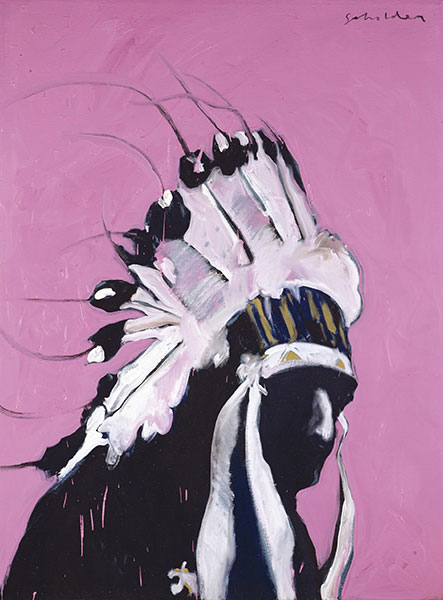
Scholder exhibited Pop Art movement elements in his “American Indian” series. His vivid colours, graphic elements, and sarcasm complemented the Pop Art style, offering a modern and eye-catching take on Native American themes. Native American painters and the development of Native American art were profoundly impacted by Scholder’s art creation method. He allowed a wider variety of artistic expressions among the Native American art community by defying traditional conventions.
The show sparked controversy as well as positive reviews. While some applauded Scholder for his innovative methods, others condemned him for what they saw as a non-Native artist’s exploitation of Native American images. The controversies surrounding the series initiated meaningful conversations regarding cultural authenticity and representation in art. Fritz Scholder’s enduring reputation as a trailblazing figure in Native American painting was bolstered by his “American Indian” series. His enthusiasm to question conventions and investigate the nuances of identity opened the door for later Native American artists to work with a broader variety of subjects and aesthetics.

